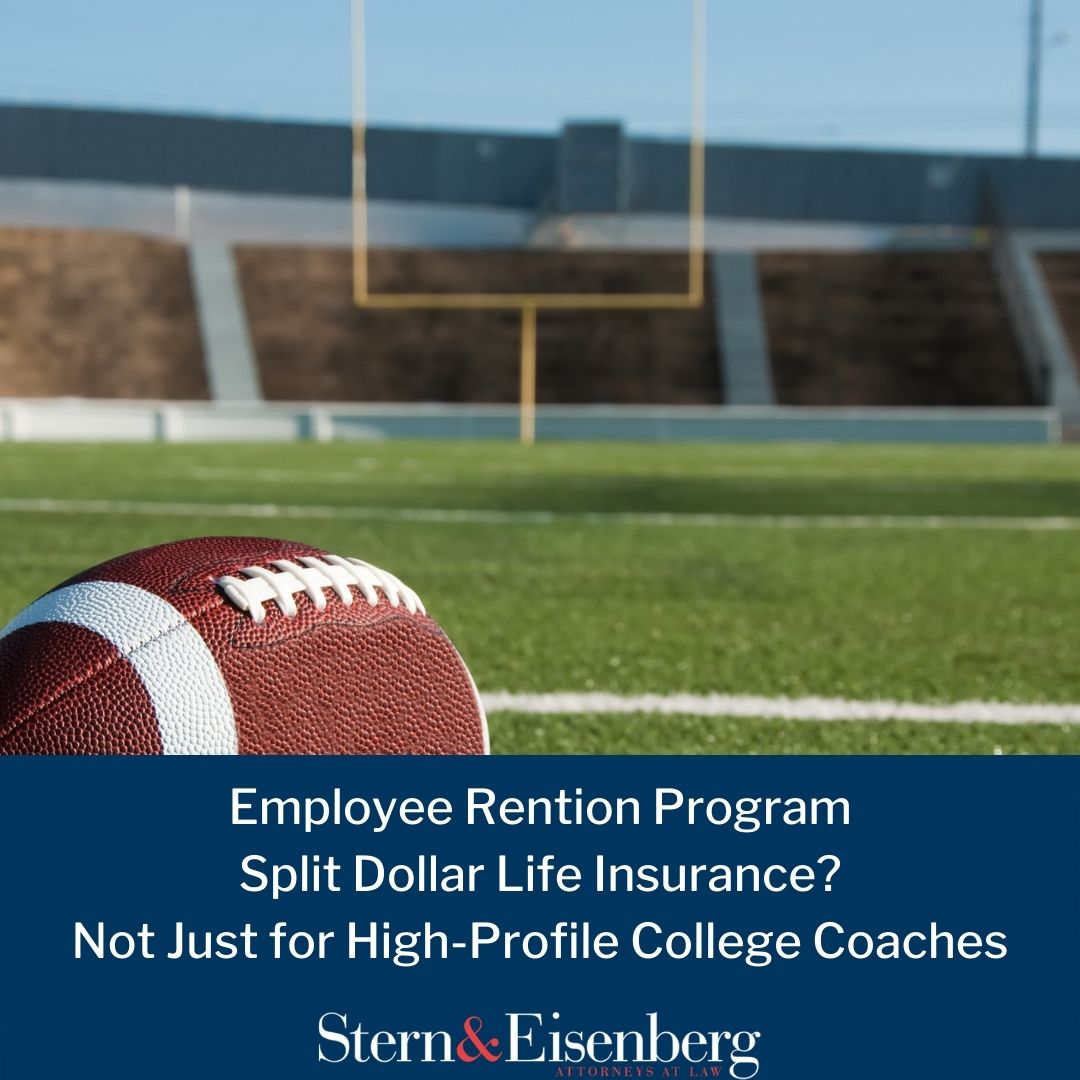By: Thomas E. Shea, Esquire, Director of Estate Planning

According to published reports, since 2016 University of Michigan football coach Jim Harbaugh’s contract includes a split-dollar life insurance arrangement. Since that time, other published reports indicate that other high-profile college coaches have similar split-dollar life insurance arrangements as part of their contracts, including since 2017, Dabo Swinney of Clemson football and Dawn Staley of South Carolina women’s basketball, and more recently within the past year, Ed Orgeron of 2020 NCAA national champion LSU football and James Franklin of Penn State football, in each case as part of their contract extensions. While these high-profile cases from the world of college sports attract media attention, split-dollar life insurance benefit planning can be an effective key employee retention strategy and we can show you how.
What is a split-dollar insurance arrangement? How does it work?
The use of split-dollar life insurance arrangements for key employees is not a new concept, either as an alternative to a deferred compensation plan or combined with a qualified or non-qualified deferred compensation arrangement. The split-dollar life insurance plan often involves a strategy where the employer loans money on favorable terms to a key employee over a period of years. The loan proceeds are invested in, or used to pay the life insurance premiums of, a permanent cash value or cash accumulation life insurance policy. The split-dollar policy design is one where the plan is to pay a high premium for the lowest death benefit. This may seem counterintuitive since most people buying traditional life insurance want to produce the highest death benefit for the lowest premium. However, the split-dollar strategy is often designed to grow cash value quickly by minimizing policy charges with a lower death benefit. At some point as part of this split-dollar strategy the employer’s loan gets repaid either out of the policy cash value during the employee’s lifetime or out of the death benefit at the employee’s death. The life insurance policy cash value or cash accumulation that is in excess of the employer’s loan balance can be accessed by employee income tax free, making this strategy a form of non-qualified retirement plan to supplement and increase the employee’s retirement benefits.
These split-dollar plans typically provide that if the employee leaves employer, he/she will be required to promptly repay the employer any program premium loans. Harbaugh’s split-dollar plan apparently provides that the employer loans are non-interest bearing, which requires Harbaugh to report and pay income tax annually on the imputed income equal to the interest Michigan would have charged him if the loan carried interest at a rate at least equal to the IRS minimum rate. While this interest free strategy may have made sense back in 2016 when Harbaugh and Michigan agreed to the plan, based on 2016 interest rates in place at the time, whether or not to have an interest rate component as part of a key employee split-dollar plan today should of course be evaluated in the context of current interest rates.
What is the purpose of a split-dollar life insurance loan arrangement in the employment context?
As can be seen in these high-profile college coach cases, the motivation is simple, retain key talent in a way that can maximize benefits to the key employee in exchange for an intended long-term commitment to the employer. Perhaps though, at least in the cases of football coaches Harbaugh, Orgeron, and Franklin, given the current 2020 woes of their respective football programs, their employers may not view them as “key” as they used to be…
Again, while these high-profile cases may garner a lot of media attention, it is important to note that split-dollar life insurance planning is not just for highly paid college coaches. The split-dollar life insurance strategy can be an effective planning and retention strategy in many contexts, in both for-profit and non-profit organizations, and as a succession planning strategy for family businesses, perhaps even more so in the current Covid-19 pandemic era where business owners may be looking for ways to keep key talent to stabilize their business and interest rates are at historic lows. Further, as the split-dollar plan involves a life insurance policy is involved, it can and often is incorporated into the key employee’s estate plan.
How well does such a key employee split-dollar program work?
While they always look great on paper at plan inception (why do them otherwise), eventually their success depends on factors related to both economic and employee/employer circumstances over time, such as applicable interest rates, life insurance policy projections vs. results, loan repayment provisions and employee job performance and security. There are also many alternative key employee retention planning strategies. For example, it has been publicly reported that coach Nick Saban of Alabama football has a generous term life insurance policy as part of his contract providing a significant death benefit for his family. The policy premiums are paid for by the school, although Saban must report the premium payment by the school as taxable income. Saban’s plan is a simpler planning strategy than the split-dollar plan. However, keep in mind that simpler is not necessarily better, for example Saban’s plan may not provide any lifetime tax-favored retirement benefits to Saban as a term life insurance policy does not have a cash value or cash accumulation component as a split-dollar plan policy does.
It is critically important that any split-dollar planning strategy be structured properly and tax compliant.
If you have any questions as to whether a key employee split-dollar planning strategy may make sense for any key employees of your business, or if you are a key employee who has been offered a split-dollar plan as part of your incentive employment plan, we may be able to help. Contact Thomas Shea, Esquire or reach out via SternEisenberg.com if you want more information or need additional questions answered.
